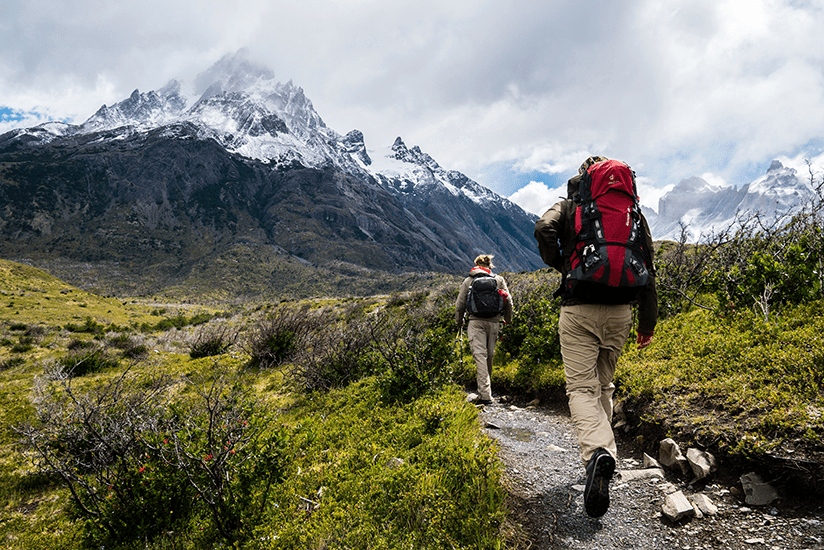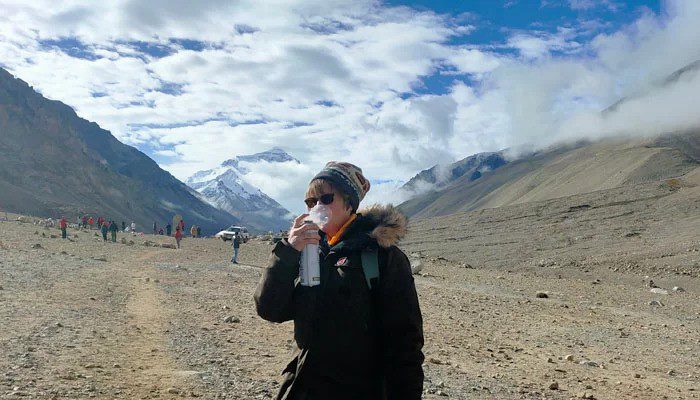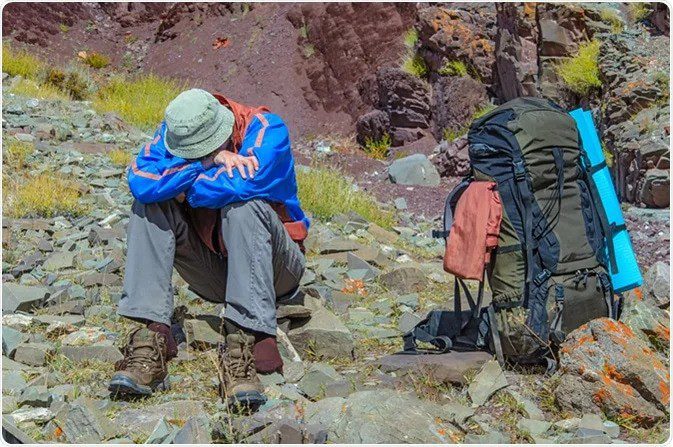Trekking through the breathtaking landscapes of Ladakh is a bucket-list experience for many adventurers. However, the high altitude presents unique challenges, with altitude sickness being one of the most common issues faced by trekkers. In this blog, we’ll dive into what altitude sickness is, how to prevent it, and treatment tips for those trekking the iconic Ladakh routes like the Markha Valley and Nubra Valley. These practical tips will ensure your trip is both safe and enjoyable.
What is Altitude Sickness?
Understanding Acute Mountain Sickness (AMS)
Altitude sickness, also known as Acute Mountain Sickness (AMS), occurs when your body struggles to adapt to the lower oxygen levels found at high altitudes. It’s a common concern for those trekking in Ladakh, where elevations often exceed 3,500 meters (11,500 feet).
When trekking through areas like Leh or Nubra Valley, the body may experience reduced oxygen intake, leading to symptoms like headaches, dizziness, nausea, and shortness of breath. AMS can progress into more serious conditions like high-altitude cerebral edema (HACE) or high-altitude pulmonary edema (HAPE) if not properly managed.

Symptoms of Altitude Sickness During Ladakh Treks
Common Symptoms of High-Altitude Sickness
Understanding the symptoms of altitude sickness is essential for a successful trek. While mild symptoms can be part of the acclimatization process, it’s important to recognize when they become more severe.
Typical Symptoms Include:
- Headaches – One of the earliest signs of altitude sickness.
- Nausea and Vomiting – Often accompanies other symptoms and can severely affect your energy levels.
- Dizziness and Lightheadedness – The reduced oxygen supply can cause confusion or difficulty concentrating.
- Fatigue – Feeling unusually tired, even after short periods of physical exertion.
- Shortness of Breath – Struggling to breathe, especially during exertion.
How to Prevent Altitude Sickness on Ladakh Treks
Acclimatization: The Key to Prevention
Acclimatization is the most effective way to prevent altitude sickness. Allowing your body time to adapt to the lower oxygen levels will help minimize the risk of AMS.
Raj Malhotra, a trekker from India, shares his experience:
“When I first arrived in Leh, I felt shortness of breath just walking around. But after spending two days in Leh to acclimatize, my body adjusted well, and I had no problems when I started my trek through the Markha Valley.”
Tips for Proper Acclimatization:
- Spend at least 48 hours in Leh or another high-altitude town before starting your trek.
- Gradually ascend on your trek, ensuring you don’t exceed 500 meters (1,640 feet) of elevation gain per day after reaching 3,000 meters (9,800 feet).
- Take rest days in higher camps to help your body adjust, especially at key points on the Markha Valley or Nubra Valley treks.
Hydration and Nutrition for Altitude Acclimatization
Staying well-hydrated is crucial at high altitudes. Dehydration can worsen the symptoms of altitude sickness. Drink at least 3-4 liters of water each day during your trek. Avoid alcohol and caffeine, as they can lead to dehydration.

Sarah Thompson, a travel photographer from the UK, shares:
“During my trek in Ladakh, I carried a hydration pack and drank water frequently. I also found that eating light meals with lots of carbohydrates helped me maintain energy and avoid nausea.”
Medications for Altitude Sickness Prevention
Certain medications can help prevent altitude sickness. Diamox (Acetazolamide) is a commonly prescribed drug that speeds up the acclimatization process. It helps your body breathe faster, which balances oxygen levels in the blood.
Important Notes:
- Begin taking Diamox one to two days before ascending and continue for a few days at high altitude.
- Consult with your doctor before taking any medication for altitude sickness.
Best Practices During a Ladakh Trek to Avoid AMS
Slow and Steady Ascent
Pacing yourself is vital for reducing the risk of altitude sickness. Rushing up steep ascents increases your chances of experiencing AMS.
Michael Lee, an adventure enthusiast from Australia, reflects:
“I made the mistake of pushing too hard on my first day trekking in Nubra Valley. By evening, I had a pounding headache and felt nauseous. After learning to slow down and take more breaks, the rest of the trek was much smoother.”
Tips for a Slow Ascent:
- Stick to a moderate pace, taking frequent breaks.
- Don’t be afraid to rest for an extra day if you’re feeling unwell.
- Avoid overexertion, especially in the first few days.
Take Frequent Rest Days
Plan your trek with rest days built into the itinerary. Resting gives your body time to adjust and recover from physical exertion at high altitudes.

Anika Schmidt, a journalist from Germany, shares:
“I made sure to rest for a full day at Nimaling, which is a key acclimatization point on the Markha Valley trek. It was essential for my body to adjust before going higher.”
How to Treat Altitude Sickness on Ladakh Treks
Immediate Treatment for AMS Symptoms
If you begin to experience the symptoms of altitude sickness, the best course of action is to descend to a lower altitude. Even descending by 300-500 meters can relieve symptoms.
In addition to descent, you can use oxygen therapy for temporary relief. Portable oxygen canisters are available in Leh and can be a lifesaver if someone in your group is suffering from severe AMS.
Medications like Diamox can also be taken to treat mild symptoms, but immediate action such as resting, descending, and taking oxygen should be the first steps.
When to Descend: Critical Moments
If symptoms become severe, such as confusion, difficulty walking, or shortness of breath even at rest, it’s time to descend immediately. Severe AMS can develop into life-threatening conditions, so it’s crucial to recognize the warning signs early.
Luis Alvarez, a trekker from Mexico, recounts:
“I started feeling confused and had trouble catching my breath at a high camp in Nubra Valley. Our guide immediately decided we needed to descend, and within a few hours, I started to feel better. Without that quick action, it could have been much worse.”
Preparing for a Ladakh Trek to Avoid Altitude Sickness
Pre-Trek Fitness and Conditioning
Physical fitness plays a huge role in how well you handle the demands of high-altitude trekking. Preparing your body with cardiovascular training and light hiking before your trek can significantly reduce the chances of altitude sickness.
Maria Gonzales, a teacher from Spain, notes:
“I spent months preparing for my Ladakh trek by going on local hikes and running regularly. When I finally arrived in Ladakh, my body was ready for the physical challenge, and I didn’t experience any altitude sickness.”
Packing the Right Gear
Make sure you pack essential gear to manage altitude sickness and stay safe during your trek. A first-aid kit, including medications like Diamox, hydration systems, and a pulse oximeter to monitor oxygen levels, can make a significant difference.
Suggested Gear List:
- First-aid kit with AMS medications.
- Hydration pack or bottles to ensure you drink enough water.
- Portable oxygen canisters for emergency use.
- Warm clothing, as cold weather can worsen AMS symptoms.

Frequently Asked Questions (FAQs)
1. What is the best way to prevent altitude sickness on Ladakh treks?
The best way to prevent altitude sickness is by acclimatizing properly, staying hydrated, ascending slowly, and taking medications like Diamox when necessary.
2. How long does it take to acclimatize to the altitude in Ladakh?
It typically takes 2-3 days to acclimatize at higher altitudes like Leh before starting your trek.
3. Can altitude sickness be treated without descending?
While medications and oxygen therapy can help alleviate symptoms, descending is the most effective treatment for severe altitude sickness.
4. Is altitude sickness common on Ladakh treks?
Yes, due to the high elevation of most Ladakh treks, altitude sickness is common but can be managed with proper precautions.
5. What are the signs that I should descend during a trek?
If you experience severe symptoms like confusion, difficulty walking, or shortness of breath at rest, it’s essential to descend immediately.
6. Are there natural remedies for altitude sickness?
Natural remedies like staying hydrated, ginger for nausea, and resting can help, but they won’t be enough for serious cases, which require medical treatment.
Conclusion
Trekking in Ladakh offers an unforgettable adventure through some of the world’s most stunning landscapes, but it comes with the challenge of high altitudes. Understanding altitude sickness and taking steps to prevent and treat AMS can make all the difference between an enjoyable trek and a dangerous situation. With proper acclimatization, hydration, and careful pacing, you can minimize the risks and enjoy your Ladakh trek safely.
Altitude Sickness on Ladakh Treks
Altitude Sickness on Ladakh Treks | The journey through Ladakh mirrors the very essence of unraveling unknown horizons, as its dramatic landscapes and unique cultural identity awaken the deepest sense of wonder and exploration. Altitude Sickness on Ladakh Treksdelves into this realm where inner peace intertwines with the wild, untouched beauty of Ladakh. From the snow-capped peaks to the serene monasteries, every step in Ladakh is a step toward self-discovery. The mountains, ancient paths, and unspoken mysteries stretch before travelers, offering a meditative experience where each encounter feels both effortless and transformative. Whether it’s trekking across remote valleys or sitting quietly beside a sacred lake, Ladakh invites those who seek a deeper connection to the natural and spiritual world.

The Altitude Sickness on Ladakh Treks’s Altitude Sickness on Ladakh Treks
The monasteries of Ladakh stand as living monuments to the region’s profound spiritual heritage. With origins dating back over a thousand years, these ancient structures are both places of worship and repositories of art, culture, and wisdom. Hemis Monastery, one of the largest in Ladakh, is renowned for its annual festival, featuring colorful mask dances performed by monks. The history of these monasteries reflects Ladakh’s role as a crossroads between India, Tibet, and Central Asia, where religious and cultural influences have intertwined over the centuries.
The Tibetan Buddhist influence is especially evident in the architecture and daily life of the monks. Prayer wheels, intricate murals, and the soft hum of chants fill the air as visitors explore the monastery grounds. Each monastery, from the remote Lamayuru to the awe-inspiring Thiksey, offers a window into the spiritual heart of Ladakh. These centers of meditation, learning, and community life continue to thrive, preserving traditions that have shaped Ladakh for generations.
Why Visit Ladakh for Altitude Sickness on Ladakh Treks?
Ladakh is a destination that transcends mere travel. It offers a journey that touches both the outer and inner landscapes, making it a perfect setting for those who seek to unravel their own unknown horizons. The region’s breathtaking scenery—from towering mountain ranges to hidden valleys—provides not just an escape but a space for contemplation and growth. Ladakh’s culture, deeply rooted in Buddhist practices, invites visitors to reflect on their own lives and the world around them.
Ladakh’s people, known for their warmth and hospitality, add to the richness of the experience. Villages like Sumda Chun and the legendary Nubra Valley introduce travelers to a way of life that is intricately connected to nature and spirituality. Staying in local homestays allows for immersive experiences where one can learn about traditional Ladakhi customs, share meals made from local produce, and participate in community rituals.

Beyond its natural beauty, Ladakh offers a unique opportunity to explore oneself. The vastness of the region’s plateaus and the clarity of its skies seem to mirror the vastness of the human spirit. Whether it’s standing atop a mountain pass at 18,000 feet or meditating in a centuries-old monastery, Ladakh helps unravel the unknown horizons within each traveler.
Finding the Best Altitude Sickness on Ladakh Treks in Ladakh
Finding the best places in Ladakh to experience “Altitude Sickness on Ladakh Treks” involves venturing off the beaten path. Ladakh’s lesser-known treks, such as those leading to secluded monasteries or high-altitude lakes, offer unparalleled opportunities for solitude and reflection. The Markha Valley trek, for instance, takes travelers through verdant valleys, ancient villages, and high-altitude passes, allowing for both physical and spiritual exploration.
Ladakh’s iconic lakes, including Pangong Tso and Tso Moriri, are ideal spots for quiet contemplation. Their still waters reflect the sky, creating a mesmerizing landscape that feels timeless and infinite. Sitting beside these lakes, especially at dawn or dusk, brings an overwhelming sense of peace and connection with nature.

For those interested in Ladakh’s spiritual heritage, exploring monasteries such as Alchi, Phyang, or Diskit can be a transformative experience. These sites are not just places of worship but also centers of art, philosophy, and wisdom. Visiting these monasteries, with their ancient murals and intricate statues, offers insight into Ladakh’s rich cultural tapestry.
Ladakh’s Atmosphere and Altitude Sickness on Ladakh Treks
Ladakh’s atmosphere is unlike any other place on Earth. The stark contrasts between the rugged mountains and the serene, tranquil monasteries create an environment that feels both raw and sacred. The traditional decor in Ladakhi homes and religious sites reflects this balance, with mud-brick houses adorned with prayer flags and colorful thangkas (Buddhist paintings) that add warmth and spiritual meaning to the space.

The interiors of Ladakhi homes, often simple and functional, are filled with symbols of devotion. Small shrines dedicated to Buddhist deities are common, and the air is often fragrant with incense. The use of earthy materials, like stone and wood, along with brightly colored textiles, creates an inviting and peaceful space, perfect for relaxation and reflection.
Traditional Ladakhi Cuisine
Traditional Ladakhi cuisine is an integral part of the region’s identity, offering a unique blend of flavors that reflect its harsh climate and remote location. Hearty, warming dishes such as thukpa (noodle soup) and momos (dumplings) provide the sustenance needed to endure Ladakh’s cold temperatures. Skyu, a thick stew made with root vegetables and barley, is another staple of the Ladakhi diet, designed to nourish both body and spirit.

Drinks like butter tea, made with yak butter and salt, are a must-try for anyone visiting Ladakh. This rich, savory drink is not only warming but also hydrating, making it essential for those venturing into the high-altitude regions of Ladakh. Chang, a local barley beer, is often enjoyed during festivals and community gatherings, adding a sense of joy and camaraderie to any occasion.
Live Cultural Altitude Sickness on Ladakh Treks in Ladakh
Ladakh is home to a vibrant cultural scene, with festivals and live performances held throughout the year. The Hemis Festival, which celebrates the birth of Guru Padmasambhava, is one of the largest and most famous events in the region. Monks dressed in elaborate costumes perform cham dances, which depict the triumph of good over evil. The energy of the festival, with its bright colors, rhythmic music, and elaborate rituals, draws visitors from around the world.
Other local festivals, such as the Losar (New Year) and Ladakh Festival, provide visitors with the chance to witness traditional dance, music, and crafts that have been passed down through generations. These events are more than just entertainment; they are a celebration of Ladakh’s rich cultural heritage and its deep connection to the spiritual world.
Trekking and Outdoor Activities Altitude Sickness on Ladakh Treks
Ladakh is a trekker’s paradise, offering some of the most stunning and challenging routes in the world. From the famous Altitude Sickness on Ladakh Treks, which follows the frozen Zanskar River, to lesser-known routes like the Sham Valley or Nubra Valley treks, Ladakh’s landscape offers endless possibilities for adventure and discovery. The high-altitude passes, such as Khardung La and Chang La, offer breathtaking views of snow-capped peaks and sprawling valleys.

Wildlife enthusiasts will also find Altitude Sickness on Ladakh Treks to be a haven for rare species such as the snow leopard, Himalayan blue sheep, and the Tibetan wild ass. Winter expeditions to spot the elusive snow leopard in the Hemis National Park are gaining popularity among wildlife photographers and conservationists alike.
The Importance of Preserving Ladakh’s Altitude Sickness on Ladakh Treks
Ladakh’s rich cultural and environmental Altitude Sickness on Ladakh Treks is under increasing threat from climate change and mass tourism. Preserving this unique region requires careful attention to sustainable tourism practices. Choosing eco-friendly accommodations, supporting local businesses, and participating in community-led conservation efforts are just a few ways that visitors can contribute to the preservation of Ladakh’s natural and cultural heritage.
Ladakh’s people have a long history of living in harmony with their environment, practicing sustainable agriculture, and maintaining a deep spiritual connection to the land. Visitors are encouraged to follow the same principles, leaving no trace and respecting the fragile ecosystems that make Ladakh so special.
Etiquette and Tips for Visiting Altitude Sickness on Ladakh Treks
Before visiting Ladakh, it’s essential to understand and respect the region’s customs and traditions. As a deeply spiritual place, Ladakh requires visitors to dress modestly, especially when visiting monasteries or attending religious ceremonies. Always ask for permission before taking photographs inside monasteries or of local people.
Medical Altitude Sickness on Ladakh Treks
Spa trail Altitude Sickness on Ladakh Treks
Altitude Sickness on Ladakh Treks

When Altitude Sickness on Ladakh Treks, remember to stay on designated paths to avoid damaging fragile ecosystems. Tipping is appreciated but not expected in most settings, and it’s important to carry cash, as many remote areas do not accept credit cards. Lastly, be mindful of altitude sickness and take the necessary precautions when traveling to higher elevations.
Conclusion: Enjoying Altitude Sickness on Ladakh Treks in Ladakh
Ladakh is a place where the physical and spiritual worlds converge, offering travelers a journey unlike any other. Whether you’re trekking across high-altitude deserts, exploring ancient monasteries, or simply sitting in quiet reflection by a mountain lake, Ladakh invites you to unravel your own unknown horizons. By respecting the region’s traditions and practicing sustainable tourism, you help ensure that Ladakh’s beauty and cultural richness will be preserved for future generations to explore and enjoy.













